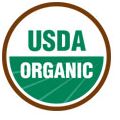Quick Tips: Shopping for Organic and Chemical-Free Foods
Get started
Many people are concerned about chemicals in or on the food they eat, so they are turning to organic foods or foods free of pesticides, hormones, or antibiotics. Use the following tips to reduce the chemicals in your diet.
Read labels
To be sure that the food you're buying is chemical-free, look for the organic seal. It means that the U.S. Department of Agriculture (USDA) has certified that the food contains no chemical fertilizers, pesticides, herbicides, hormones, drugs, or genetically modified organisms (GMOs).
- If a label has the seal and says "100% organic," all ingredients are organic. If the seal and the word "organic" are displayed, 95% or more of the ingredients are organic.
- Don't fall for the "natural" label. It isn't the same as organic. The USDA only controls this label for meat, poultry, and eggs. Even then it only means that the products are lightly processed and contain no artificial ingredients. It says nothing about the farm practices used to produce them.
- Be aware that most processed foods contain GMOs. If the label lists soybean oil, canola oil, soy flour, corn syrup, corn meal, cornstarch, sucrose, soy lecithin, or vegetable protein, the food was most likely made using GMOs.
If organic products aren't available, look for:
- Meat and poultry labeled "No antibiotics administered/USDA process certified." Labels such as "No antibiotics" or "Raised without antibiotics" may be accurate, but they haven't been verified by the USDA.
- Milk labeled "rBGH-free" or "rBST-free." This is the producer's promise that it doesn't contain these artificial hormones.
- Foods labeled "No GMOs." But understand that this labeling isn't regulated. In the U.S., buying organic is the best way to avoid GMOs.
Be a savvy shopper
Buying only organic products can be expensive. These ideas can help you get the most for your food dollars.
- Go organic for produce with the highest pesticide levels: peaches, apples, nectarines, strawberries, blueberries, cherries, grapes, celery, bell peppers, green beans, cucumbers, potatoes, and leafy greens such as lettuce, spinach, and kale.
- Buy organic fruits and vegetables that are in season, when they're plentiful and cheaper.
- Visit farmers' markets, and talk to the growers. Many small farms and ranches use organic methods but can't afford to become certified.
- Check into community-supported agriculture (CSA) programs in your area. You buy a share in the spring and get a box of fresh produce each week through the growing season.
- Buy cheaper cuts of organic meat. For example, chicken thighs or whole birds are usually less expensive than chicken breasts.
- Browse the bulk aisle for organic items such as flour, pasta, and cereals.
- Watch grocery store ads, and stock up on organic products when they're on sale.
- Buy separate ingredients, and cook more. Processed foods cost more than their ingredients and are more likely to contain GMOs and artificial additives.
Credits
Current as of: September 20, 2023
Author: Healthwise Staff
Clinical Review Board
All Healthwise education is reviewed by a team that includes physicians, nurses, advanced practitioners, registered dieticians, and other healthcare professionals.
Current as of: September 20, 2023
Author: Healthwise Staff
Clinical Review Board
All Healthwise education is reviewed by a team that includes physicians, nurses, advanced practitioners, registered dieticians, and other healthcare professionals.
This information does not replace the advice of a doctor. Healthwise, Incorporated, disclaims any warranty or liability for your use of this information. Your use of this information means that you agree to the Terms of Use. Learn how we develop our content.


